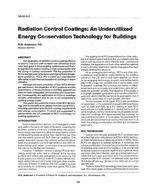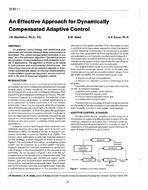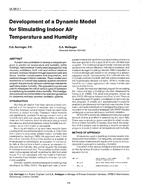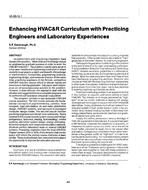-
-
Available Formats
- Options
- Availability
- Priced From ( in USD )
-
Available Formats
-
- Immediate download
- $16.00
- Add to Cart
Customers Who Bought This Also Bought
-

VA-89-14-4 -- The Role of Fire Dampers in the Event of Fi...
Priced From $16.00 -

VA-89-08-5 -- Radiation Control Coatings: An Underutilize...
Priced From $16.00 -

VA-89-01-1 -- An Effective Approach for Dynamically Compe...
Priced From $16.00 -

VA-89-02-1 -- Development of a Dynamic Model for Simulati...
Priced From $16.00
About This Item
Full Description
Academicians and practicing engineers have debated the question, "What skiffs and know~edge should an engineering graduate possess in order to enter the HVAC&R industry?" The problem is particularly acute in a four-year mechanical engineering curriculum in which students must acquire a depth and breadth of knowledge in mathematics, humanities, engineering science, engineering design, and computer science. At the same time, practicing engineers in the fiercely competitive HVAC&R industry cannot afford to devote significant resources to training graduates. This paper does not propose an all-encompassing solution to the problem. However, it does discuss one attempt to deal with the situation and suggests that more complete programs can be achieved with academic-industrial cooperation.
The program involves a two-semester HVAC&R course sequence. The first course includes the fundamental concepts of psychrometrics, comfort, heat loss~gain, load calculations, air and water distribution design, HVAC&R systems, and exposure to packaged computer design codes. The second course involves practicing engineers and the lab more extensively. Topics covered in this course include system component design (refrigeration, hydronics, heating, fluid handling), control systems, alternative system design, energy estimating, economic analysis, and component simulation methods. Students perform laboratory tests on several HVAC&R systems. Practicing engineers from the local ASHRAE chapter present 20% to 30% of the lectures that involve topics with which the primary course instructor is least familiar. These professionals have welcomed and enjoyed the opportunity to improve the education process.





